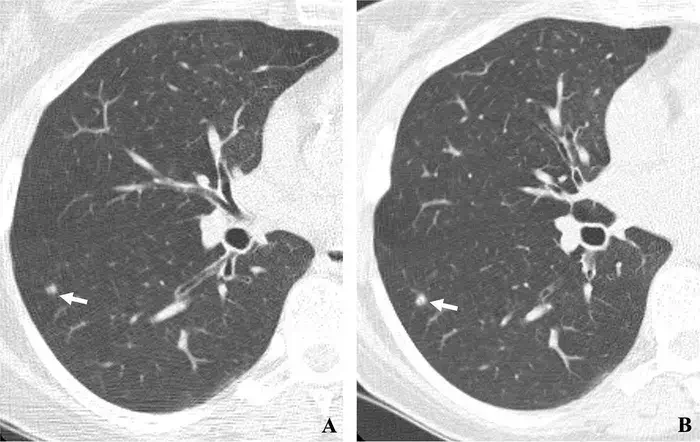OAK BROOK, Ill. – A world-first study has concluded that annual screenings for lung cancer can significantly increase survival chances — especially among smokers. Researchers from Mount Sinai Hospital in New York conducted a study over 20 years and discovered that diagnoses made through annual low-dose CT scans resulted in a survival rate of 81 percent over the following two decades.
Furthermore, if lung cancer is detected in its earliest stages, the long-term survival rate for patients can surge to 95 percent.
Globally, lung cancer is the most lethal type of cancer, claiming more lives each year than any other. The American Lung Association reports that the average five-year survival rate for lung cancer is a dismal 18.6 percent. Currently, only 16 percent of lung cancers are diagnosed at an early stage, and more than half of the patients succumb to the disease within a year of diagnosis.
In the United States, the average five-year survival rate for all lung cancer patients is just 25.4 percent. With only 21 percent of cases diagnosed early, the majority of diagnoses occur after symptoms become apparent.
However, studies have shown that early detection can significantly improve survival rates for those with lung cancer. While advancements in treating more advanced-stage cancers with targeted therapy and immunotherapy have made strides in recent years, early diagnosis through low-dose CT screening, before symptoms appear, remains the most effective strategy in reducing cancer fatalities.
Since 1992, the Early Lung and Cardiac Action Program at the Icahn School of Medicine at Mount Sinai has been evaluating the effectiveness of low-dose CT screening for lung cancer. This effort led to the establishment of the International Early Lung Cancer Action Program (I-ELCAP), which has enlisted over 89,000 participants from 80 institutions around the world to study lung cancer screening.

In 2006, the researchers identified a 10-year survival rate of 80 percent in patients whose cancer was detected via CT screening. Their latest study, focusing on 20-year survival rates, was led by radiology professor Dr. Claudia Henschke and her team. They found that among the 1,257 I-ELCAP participants diagnosed with lung cancer, 81 percent were diagnosed with Stage I disease, characterized by a very small tumor that has not yet spread to any lymph nodes. For these Stage I cancers, the long-term survival rate was 87 percent.
The findings of this study demonstrate that patients diagnosed with early-stage lung cancer through CT screening have a substantially better prognosis after 20 years. By treating the cancer while it’s small, there is a high likelihood of effectively curing patients in the long term.
“It is the first time that 20-year survival rates from annual screening have been reported,” says the study’s lead author, Claudia Henschke, Ph.D., M.D., professor of radiology and director of the Early Lung and Cardiac Action Program at the Icahn School of Medicine at Mount Sinai, in a media release.
“This 20-year survival rate of 81% is the estimated cure rate of all participants with lung cancers diagnosed by annual screening. This is a huge benefit compared to waiting for a diagnosis that, in usual care, is symptom-prompted.”
“We were excited to see that the estimated cure rate we reported in 2006 has persisted after 20 years of follow-up,” Dr. Henschke continues. “Lung cancer can be cured if you enroll in an annual screening program using a well-defined protocol and comprehensive management system. It is important to return for annual screening.”
“While screening doesn’t prevent cancers from occurring, it is the major tool to identify lung cancers in their earliest stage when they can be cured,” the researcher adds in a statement.
The researchers also included participants who smoked less than 10-pack years — meaning 10 years of smoking a pack of 20 cigarettes per day — as well as those who have never smoked but noted passive exposure to secondhand smoke.
That decision was made due to the frequency of lung cancer diagnoses in non-smokers. The less than 10 pack-years of smoking group includes people who have never smoked. In the United States, roughly 25 percent of lung cancers are diagnosed among people who have never smoked.
“Ultimately, anyone interested in being screened needs to know that if they are unfortunate enough to develop lung cancer, it can be cured if found early,” Dr. Henschke concludes. “Even if new lung cancers were found over time, as long as they continued with annual screening, they could be cured.”
The U.S. Preventive Services Task Force recommends annual lung cancer screening with low-dose CT in adults between 50 and 80 years of age who have a 20-pack-year smoking history and currently smoke or have quit within the past 15 years.
South West News Service writer James Gamble contributed to this report.
The study is published in the journal Radiology.
You might also be interested in:
- AI screening tool twice as effective at discovering lung cancer before it’s too late
- Smoking cigarettes doubles the risk of developing depression, bipolar disorder
- Best Ways To Quit Smoking: How To Resist Cravings, According To Experts

